Finding the Best Multimeter for Your Projects: Analog VS Digital Multimeter
2024-06-24
2425
Catalog

Figure 1: Differences Between Digital Multimeter and Analog Multimeter
What Is Analog Multimeter?
Analog multimeters are versatile tools for measuring electrical values such as voltage, current, resistance, frequency, and signal power. They excel in providing a wide range of readings, making them invaluable for professional and DIY applications. One key advantage is their affordability, especially in switched-range models that allow users to manually select the measurement range for better accuracy. Analog multimeters function by moving a needle across a scale, a method that demands precision from the user. The low resistance and high sensitivity of analog multimeters, particularly at lower scales, mean that even slight movements or fluctuations can impact the needle’s position, leading to potential measurement errors. For accurate readings, users must have steady hands, a clear line of sight to avoid parallax errors, and a solid grasp of the device’s operational subtleties.
What Is Digital Multimeter?
A digital multimeter is a sophisticated tool for measuring various electrical parameters, and its primary distinguishing feature from an analog multimeter is its digital display. Unlike analog models that use a needle to indicate readings, digital multimeters display measurements in clear digits on LED or LCD screens, significantly enhancing measurement accuracy. This digital readout eliminates the guesswork, making digital multimeters ideal for precise electrical diagnostics. The operation involves selecting the measurement type (voltage, current, resistance) on a rotary dial, ensuring the probes are correctly connected to the circuit, and reading the exact value on the screen. Digital multimeters typically have higher input impedance, around 1 megaohm (MΩ) to 10 megaohms (MΩ). This fact helps minimize circuit loading and ensures accurate voltage measurements. Additional features like auto-ranging automatically select the appropriate measurement range, further simplifying the process and reducing the chance of user error.
An additional feature that makes digital multimeters particularly useful is the auto-ranging function, which automatically selects the appropriate measurement range. When the exact range is unknown, this capability simplifies the process and reduces the potential for user error, making digital multimeters more user-friendly. This feature allows users to focus on connecting the probes correctly and reading the display without worrying about manually setting the correct range. This can be particularly advantageous for those with less experience in electrical measurements. The auto-ranging function ensures that measurements are taken within the optimal range, enhancing accuracy and efficiency during diagnostics and troubleshooting tasks.
Differences in Readout Displays: Digital Multimeter vs. Analog Multimeter
Digital Multimeter Readout Display

Figure 2: Digital Multimeter Readout Display Illustration
Digital multimeters use advanced readout displays that significantly enhance precision and ease of reading measurements. Each numeral in a digital display consists of up to seven segments that light up to form numbers. This configuration ensures clear and accurate readings, eliminating the ambiguity associated with analog needle positions. Common display configurations include 2½ digit displays, capable of showing values up to 199, and 3½ digit displays, which can show values up to 1999. These configurations increment in multiples of ten, known as decades, providing a broader range of accurate measurements.
When operating a digital multimeter, the user starts by selecting the desired measurement function and ensuring the probes are connected correctly. Once the probes contact the test points, the digital display immediately shows the measurement in precise numerical form. The clear, segmented display makes it easy to read values at a glance, even in low-light conditions, thanks to LED or backlit LCD options. This direct readout reduces the potential for human error and speeds up the diagnostic process. Plus, the auto-ranging feature automatically adjusts the display to the appropriate range, further simplifying the operation. By providing accurate, easy-to-read numerical data, digital multimeters enhance both efficiency and reliability in electrical measurement tasks. In the past, users had to manually select the range and adjust the decimal point to match the measurement on the display, requiring a solid understanding of the meter's range and often involving trial & error. Modern digital multimeters, however, feature auto-ranging displays that automatically select the correct range and adjust the decimal point accordingly. This automation simplifies the measurement process and significantly reduces the likelihood of user error. When using a modern digital multimeter, the user simply sets the function (e.g., voltage, current, resistance) and connects the probes to the circuit. The multimeter then instantly determines the appropriate range and displays the measurement with the correct decimal placement. This feature is particularly beneficial for beginners and those needing quick, accurate readings without the hassle of manual adjustments. Auto-ranging not only saves time but also ensures that measurements are precise.
In terms of usability, digital multimeters provide various display options to meet different needs, with digit sizes ranging from 5 mm to over 12 mm depending on the manufacturer and intended use. Larger displays are particularly advantageous when readings need to be taken from a distance or in environments where close-up viewing is difficult, such as in dimly lit or cramped spaces. Besides, the choice of display size allows customization to suit specific electrical measurement tasks.
Analog Multimeter Readout Display

Figure 3: Analog Multimeter Readout Display Illustration
The readout display on an analog multimeter is typically a needle or pointer that moves across a graduated scale to indicate the measurement value. These scales can sometimes be nonlinear, especially for resistance measurements. The function/range switch on an analog multimeter allows users to select different resistance ranges, typically labeled as (R) × 1K, (R) × 10, and (R) × 1. To determine the measured resistance value, you must carefully observe the needle's position on the scale and multiply this value by the appropriate factor—1000, 10, or 1—based on the selected range. In practice, this process requires precise handling and a clear understanding of the scale markings. First, you select the appropriate range using the function/range switch. Then, you connect the test probes to the circuit, ensuring a firm connection. As the needle moves, you must align your line of sight directly with the needle to avoid parallax errors, which can occur if you view the needle from an angle. This ensures the most accurate reading. Once the needle stabilizes, read the indicated value on the scale and apply the multiplier corresponding to your selected range.
For voltage measurements, analog multimeters feature multiple scales that cater to different voltage ranges. These scales typically include settings for 1000 volts, 250 volts, 50 volts, and 10 volts for DC voltage. Interestingly, the same scales are often used for both AC and DC voltage measurements, with the correct interpretation determined by the function/range switch setting. This switch is needed as it designates whether the reading should be interpreted as AC or DC voltage and selects the specific scale to use. For instance, the 10-volt scale may serve both the 10-volt and 1000-volt settings, with the exact reading guided by the function/range switch.
Working Principle of Analog and Digital Multimeters
Understanding the differences in the working principles of analog and digital multimeters is required for selecting the right tool for your electrical measurements. While both types serve the same basic purpose—measuring voltage, current, and resistance—the methods they use to achieve this are quite distinct.

Figure 4: Schematic Diagram of Analog Multimeter Function
Analog multimeters, which have been in use for a long time, employ a moving needle to display readings. The core mechanism involves a coil of wire positioned between two magnets. When an electrical current passes through the coil, it generates a magnetic field. This magnetic field interacts with the fixed magnets, causing the coil to move. The needle, attached to the coil, moves across a calibrated scale to indicate the measurement. This mechanical movement is straightforward and visually intuitive, allowing users to observe changes and trends in real-time. However, reading the scale accurately can be challenging, especially for beginners. Precise interpretation of the needle’s position on the scale requires steady hands and a direct line of sight to avoid parallax errors. Users must also select the correct range manually, which adds to the complexity.

Figure 5: Schematic Diagram of Digital Multimeter Function
Digital multimeters, on the other hand, use electronic circuits to measure and display values. The primary component is an analog-to-digital converter (ADC), which transforms the analog signals into digital data. When using a digital multimeter, you start by selecting the measurement function and connecting the probes to the circuit. The ADC processes the input signal and displays a numerical readout on an LCD or LED screen. This method provides a clear, precise value, significantly reducing the potential for human error and simplifying the process for users, especially those less experienced with electrical measurements. Features such as auto-ranging automatically adjust the measurement range. Also, the data hold feature freezes the displayed value which further enhances the ease of use and accuracy.
One of the main differences in the working principles of analog and digital multimeters is how the measurement is displayed. Analog multimeters use a continuous scale and a moving needle to provide a visual representation of gradual changes, making them particularly useful for observing fluctuations and trends. In contrast, digital multimeters display exact numerical values on an LED or LCD screen, which are much easier to read and minimize the risk of human error.
Detailed Differences in Applications
Choosing between analog and digital multimeters significantly affects the effectiveness and efficiency of electrical measurements. The choice depends heavily on the specific application and environment.
Application Suitability
Analog Multimeters: Best for visual trend analysis and robustness in power-scarce environments. Preferred for tasks requiring observation of trends and gradual changes, such as tuning circuits.
Digital Multimeters: Great choice for high-precision tasks, user-friendly operations, and environments needing quick, accurate readings. Suitable for diagnosing electrical problems, repairing electronics, and detailed projects.
Analog Multimeters in Noisy Environments
Noise Resistance: Excel in environments with substantial electrical noise, where digital multimeters might pick up interference. Their design ensures reliable readings in noisy workshops or industrial settings.
Battery-Free Dependability: Do not require batteries for most measurements, making them dependable without access to a power source. They provide continuous functionality regardless of power availability.
Digital Multimeters for Precision
Exact Readings: Engineered for high accuracy and precision, displaying exact numerical readings to minimize human error.
User-Friendly Features: Auto-ranging and data hold functions enhance versatility and ease of use. Simply connect the probes, and the device adjusts itself, eliminating manual range selection. The data hold function is handy in tight or awkward spaces.
Educational Use
Student-Friendly: Preferred for their ease of use and clear digital displays. Simplifies reading measurements, aiding students in understanding electrical concepts.
Efficient Learning: During lab exercises, students can quickly select measurement functions, connect probes, and read precise values, ensuring efficient learning experiences. The intuitive operation enhances the effectiveness of teaching electrical principles.
Which One Has Higher Impedance? Digital or Analog Multimeter?
When choosing between digital and analog multimeters, one valued factor to consider is their impedance. Impedance refers to the resistance a meter offers to the flow of electrical current. The level of impedance in a multimeter significantly impacts its performance and suitability for different applications, particularly in terms of accuracy and interaction with the circuits being measured.
Digital multimeters normally have a much higher impedance than analog multimeters, often around 10 megohms (10 million ohms). This high impedance is required because it ensures that the multimeter draws minimal current when measuring voltage in a circuit. Minimal current draw is highly required as it prevents the measurement process from disturbing the circuit's operation. When using a digital multimeter, you simply connect the probes to the circuit, and the high impedance ensures accurate readings without affecting the circuit, especially valued for sensitive electronics like microcontrollers or other delicate components. Its high impedance feature is particularly advantageous in modern electronics, where precision and minimal interference are ideal for accurate diagnostics and troubleshooting. By maintaining circuit integrity, digital multimeters allow for precise measurements that are required for effective analysis and repair. They ensure that even the most delicate components remain unaffected during testing.
Analog multimeters usually have a lower impedance, with input impedance often ranging from 10 kilohms (10,000 ohms) to 20 kilohms per volt. While this level of impedance was sufficient for many older or more robust circuits, it can cause significant issues in modern, sensitive electronic devices. The lower impedance means that the analog meter draws more current from the circuit being measured. This increased current draw can alter the circuit’s behavior, leading to less accurate readings and potentially interfering with the circuit’s normal operation. When using an analog multimeter, you must be cautious of the circuit's sensitivity. Connect the probes and observe the needle movement but be aware that the meter’s influence might skew the results. In sensitive circuits, this can result in erroneous measurements and may even damage delicate components. Therefore, understanding the limitations and impact of lower impedance is required for accurate diagnostics and to prevent potential harm to modern electronics during testing.
The difference in impedance between digital and analog multimeters underscores the importance of choosing the right tool for the job. In applications requiring high precision and minimal circuit disturbance, a digital multimeter’s high impedance is a clear advantage. In contrast, analog multimeters, with their lower impedance, are more suitable for applications where the exact current draw is less required. They are often used in scenarios involving robust circuits that are less sensitive to the measurement process.
Precise Power Source Similarities
One of the key similarities between analog and digital multimeters is that both types use batteries to enable additional functions. Both of them have specific power requirements.
Standard 9V or AA Batteries for Digital Multimeters

Figure 6: Using Standard 9V Batteries for Digital Multimeters
Digital multimeters (DMMs) typically rely on batteries for their operation, most commonly using standard 9V or AA batteries to power their digital displays, internal circuitry, and additional features such as backlighting and auto-ranging functions. This reliance on battery power makes DMMs highly portable and convenient, enabling their use in diverse settings, whether you are working in a lab, on a construction site, or in your garage. The portability of DMMs is a significant advantage, offering flexibility and ease of use across various environments. To operate, you simply install the batteries, turn on the device, select the desired measurement function, and connect the probes to the circuit. The digital readout and advanced features provide precise measurements, enhancing efficiency and accuracy in any location. This battery-powered functionality ensures that DMMs are always ready to use, offering consistent performance without dependence on external power sources.
The battery life of a digital multimeter varies based on usage frequency and its features. Models equipped with an auto-shutoff feature help conserve battery life by turning off the meter when not in use, significantly extending operational time and ensuring the multimeter is ready whenever needed. To maximize efficiency, always ensure the auto-shutoff is enabled, especially during periods of intermittent use. It is also wise to keep spare batteries on hand to prevent interruptions during reproving measurements. When using a digital multimeter, regularly check the battery status, and replace them as needed to maintain consistent performance. This practice ensures that your multimeter remains reliable and accurate, avoiding downtime during diagnostics and repairs.
Button Cells, AA, AAA Batteries for Analog Multimeters

Figure 7: Using AA and AAA Batteries for Analog Multimeters
Analog multimeters primarily rely on their mechanical design for basic functions. Meaning, they do not require a power source for measuring voltage or current. This makes them dependable tools and capable of operating without a continuous power supply. These multimeters are especially useful in environments where access to power is limited. However, for measuring resistance, analog multimeters do require batteries. Typically, they use small batteries like AA, AAA, or button cells to power the resistance measurement feature. When measuring resistance, these batteries send a small current through the circuit, allowing the meter to gauge the resistance accurately.
To operate analog multimeters, you first install the appropriate battery, whether AA, AAA, or button cells. Then, set the function to resistance, and connect the probes to the circuit. The meter’s needle will then move to indicate the resistance value, which you interpret by reading the scale. This combination of mechanical and battery-powered functions ensures that analog multimeters remain versatile for various electrical diagnostics, especially in scenarios where voltage and current measurements do not require a power source.
Analog VS Digital Multimeter Pros & Cons
Pros of Analog Multimeters
Analog multimeters offer several significant advantages, particularly in their ability to show trends and changes over time. One of the most notable features of analog multimeters is the moving needle, which provides a visual representation of how values fluctuate. This continuous movement is particularly beneficial when tuning circuits or making fine adjustments. Unlike digital readouts that provide static numerical values, the needle’s movement allows users to observe gradual changes, making it easier to detect trends and variations in the measurements. However, analog multimeters are often more robust and less affected by electrical noise, making them reliable in noisy environments. Their mechanical nature also means they can operate without batteries for voltage and current measurements, ensuring they are always ready for use. Analog multimeters excel in environments with significant electrical noise, such as workshops or industrial sites, due to their inherent resilience to interference.
Cons of Analog Multimeters
Despite their advantages, analog multimeters have several notable drawbacks. One significant disadvantage is the potential for reading inaccuracies due to the needle-and-scale design, requiring users to interpret the needle’s position. This process is prone to human error, particularly parallax error, which occurs when the needle is viewed from an angle, leading to incorrect readings. Such errors can make obtaining precise measurements challenging, especially in fast-paced or high-stress environments. Unlike digital models that provide clear numerical values on a screen, analog multimeters demand careful alignment and attention to detail, making them less precise and more susceptible to misinterpretation.
Another limitation of analog multimeters is the lack of advanced features common in digital models, such as auto-ranging capabilities. They require manual range selection, making the process cumbersome and time-consuming, particularly for complex measurements. Besides that, analog multimeters typically lack the data hold function found in digital models. The data hold feature allows users to freeze the displayed measurement, facilitating easier recording or analysis without needing to constantly monitor the meter. Without this function, analog multimeters become less convenient for tasks requiring detailed documentation or in environments where it is challenging to keep an eye on the meter continuously. This absence can complicate operations, as users must manually record readings in real time, increasing the potential for errors and making the process more cumbersome, especially in fast-paced or unstable work conditions. However, analog multimeters tend to be bulkier and more fragile compared to digital counterparts due to their mechanical components, like the needle and internal moving parts. This fragility limits their durability and lifespan, making them less suitable for rugged or demanding environments.
Pros of Digital Multimeters
Digital multimeters offer several significant advantages, making them the better choice for users requiring high accuracy and precision in electrical measurements. One of their foremost benefits is their exceptional accuracy and precision, providing exact numerical values rather than relying on the interpretation of a needle's position on a scale. This digital clarity reduces the chance of human error. The digital readout is straightforward to read, even in low-light conditions. This enables users to obtain reliable results quickly and efficiently. Besides that, features such as auto-ranging, data hold, and advanced measurement capabilities enhance operational efficiency and ease of use, make digital multimeters a versatile tool for both simple and complex electrical tasks.
Another advantage of digital multimeters is their array of advanced features, significantly enhancing usability. A key feature is auto-ranging, which automatically selects the correct measurement range for the parameter being tested. This function saves time and effort, especially for users unfamiliar with manual range selection. Auto-ranging minimizes the risk of incorrect range selection, preventing inaccurate readings and protecting the multimeter from potential damage. This feature streamlines the measurement process, allowing for quicker, more reliable results, and reducing the margin for user error. Also, digital multimeters often feature a data hold function, which allows users to freeze the displayed value. This is especially useful when taking measurements in hard-to-reach places where continuously viewing the screen is challenging.
Cons of Digital Multimeters
Despite their numerous benefits, digital multimeters have drawbacks that users should consider. A significant disadvantage is their sensitivity to electrical noise. In environments with high electromagnetic interference, such as industrial settings, digital multimeters can pick up unwanted signals, affecting the accuracy of their readings. This susceptibility to noise can be particularly problematic when precise measurements are needed. Users must be cautious in such settings, as the interference can lead to erroneous data, complicating diagnostics and potentially leading to incorrect conclusions or faulty repairs. This limitation necessitates careful consideration of the environment when using digital multimeters for high-precision tasks.
Another limitation of digital multimeters is their reliance on batteries for operation. Unlike analog multimeters, which can measure voltage and current without a power source, digital models require batteries to function. This dependency means they can run out of power at inconvenient times, potentially interrupting dangerous work. To mitigate this risk, users must always keep spare batteries on hand, adding an extra layer of maintenance. This need for regular battery replacement can be particularly burdensome in remote locations or during extended use. Cost is another area where digital multimeters can fall short compared to analog counterparts. Digital multimeters, especially those with advanced features like auto-ranging, data hold, and memory functions, tend to be more expensive. For users needing a basic tool for simple measurements, the additional cost of a digital multimeter might not be justified. Therefore, the cost-benefit ratio must be carefully considered, as investing in a high-end digital multimeter may be uncertain for straightforward, infrequent tasks where a basic, less expensive analog multimeter would suffice.
Conclusion
Choosing between analog and digital multimeters depends on your needs and the environment you work in. Both types have their strengths. Analog multimeters are robust and cost-effective, suitable for environments with electrical noise and for users who need a reliable, straightforward tool. Digital multimeters, with their high accuracy and advanced features, are ideal for complex measurements and user-friendly operations. Consider your specific tasks and environment when choosing a multimeter. Both analog and digital models offer valuable benefits that can enhance the accuracy and efficiency of your electrical measurements.
Frequently Asked Questions [FAQ]
1. What Is The First Thing You Should Do Before Using A Multimeter?
Before using a multimeter, the first thing you should do is check the settings and condition of the device. Make sure the multimeter is set to the correct measurement type (voltage, current, resistance, etc.) and the appropriate range for what you intend to measure. For analog multimeters, ensure the needle is calibrated to zero, which involves shorting the test leads together and adjusting the zero-ohm knob until the needle points to zero on the resistance scale. For digital multimeters, verify that the battery is functional and that the device powers on correctly.
2. Are Analog Multimeters Obsolete?
Analog multimeters are not obsolete. While digital multimeters have largely taken over due to their precision, ease of use, and additional features, analog multimeters still have their place. They are particularly valued for their ability to display trends and fluctuations in real-time, which can be useful in tuning and monitoring tasks. Their robustness and ability to function without a battery for voltage and current measurements make them reliable in certain environments, especially where electrical noise is present or where battery power is not available.
3. Why Is A Digital Multimeter More Accurate?
A digital multimeter is more accurate because it provides precise numerical readouts, eliminating the guesswork involved in interpreting needle positions on an analog scale. Digital multimeters use electronic circuits to convert analog signals into digital data, which is displayed on an LED or LCD screen. This conversion process, aided by components like analog-to-digital converters (ADC), ensures high accuracy and minimal human error. Features like auto-ranging further enhance accuracy by automatically selecting the appropriate measurement range, reducing the chance of incorrect settings.
4. How Accurate Is An Analog Multimeter?
The accuracy of an analog multimeter depends on its quality and the skill of the user. Generally, analog multimeters can have an accuracy range of about ±2-3% of the full-scale reading. This means that for a full-scale reading of 100 volts, the measurement could be off by 2-3 volts. Factors such as parallax errors, where the angle of viewing the needle can affect the reading, and the need for manual range selection can introduce inaccuracies. Despite these limitations, analog multimeters can still provide reliable readings when used correctly, particularly for observing trends and fluctuations.
5. Why Do Technicians Still Use Analog Multimeters?
Technicians still use analog multimeters for several reasons:
Trend Analysis: The continuous movement of the needle provides a clear visual representation of fluctuations and trends, which is beneficial for tasks like tuning circuits and monitoring changing signals.
Noise Resistance: Analog multimeters are less susceptible to electrical noise, making them reliable in noisy environments such as industrial settings.
Battery Independence: For voltage and current measurements, analog multimeters do not require a battery, ensuring they can be used in situations where power sources are limited or unavailable.
Robustness: Analog multimeters are often more rugged and can withstand harsh conditions, including drops, vibrations, and extreme temperatures.
Simplicity: For basic measurements, analog multimeters offer a straightforward and reliable tool without the complexity of digital interfaces.
By leveraging these strengths, technicians can benefit from the unique advantages that analog multimeters offer in specific scenarios.
 ABOUT US
Customer satisfaction every time. Mutual trust and common interests.
ABOUT US
Customer satisfaction every time. Mutual trust and common interests.
function test. The highest cost-effective products and the best service is our eternal commitment.
Hot Article
- Are CR2032 and CR2016 Interchangeable
- MOSFET: Definition, Working Principle and Selection
- Relay Installation and Testing, Interpretation of Relay Wiring Diagrams
- CR2016 vs. CR2032 What’s the difference
- NPN vs. PNP: What's the Difference?
- esp32 vs stm32: which microcontroller is better for you?
- LM358 Dual Operational Amplifier Comprehensive Guide: Pinouts, Circuit Diagrams, Equivalents, Useful Examples
- CR2032 VS DL2032 VS CR2025 Comparison Guide
- Understanding the Differences ESP32 and ESP32-S3 Technical and Performance Analysis
- Detailed Analysis of RC Series Circuit
 7404 Hexagonal Inverter: Datasheet, Pinout, Pin Diagram, Truth Table, Applications & Alternatives
7404 Hexagonal Inverter: Datasheet, Pinout, Pin Diagram, Truth Table, Applications & Alternatives
2024-06-24
 Comprehensive Guide to Electronically Commutated Motors (ECMs)
Comprehensive Guide to Electronically Commutated Motors (ECMs)
2024-06-24
Hot Part Number
 MS920SE-FL27E
MS920SE-FL27E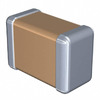 C3216X7R1H224K115AA
C3216X7R1H224K115AA C3216X8R2A224M160AB
C3216X8R2A224M160AB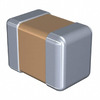 C2012CH2E272K125AA
C2012CH2E272K125AA CC1210KKX7RYBB104
CC1210KKX7RYBB104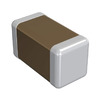 GRM1555C1H820FA01J
GRM1555C1H820FA01J GRM1555C1H3R2WA01D
GRM1555C1H3R2WA01D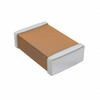 CL21B225MAFNNNF
CL21B225MAFNNNF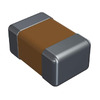 08055C471MAT2E
08055C471MAT2E 04025C101JAT4A
04025C101JAT4A
- CX0805MRX7R0BB472
- 1812WC221KAT1A
- GRM1556S1H4R6CZ01D
- 2102352-2
- ICS9P750CFLFT
- MX29LV040CQC-90G
- MIC23450-AAAYML-TR
- VI-2T1-EY
- PIC16F870-I/SO
- 74LVC1G98DW-7
- MAX8866SEUA+T
- VI-26K-IV
- 2MBI150UM-120
- M-FIAM5BM23
- TPS3808G25DRVR
- AD7845KPZ
- CD74ACT00M96
- T495B476M006ATE250
- LM4666SD/NOPB
- INA216A4YFFR
- T491B475K010ZTZB01
- T491C226K016AT7622
- AK93C65BH-L
- MC9S12XB128CAL
- MEGAMOS/ACTA
- PPC750FX-GR1023T
- TC7MP98FT
- GXLV-200B2.2V85C
- SF103404CDWE
- SPR26S416A
- IDT77V107L25PFI
- S5L8450X01-Y080
- SAA7381HL
- TMS570LS2135DZWTSQ1
- LC72366-9A18
- MGF0913A
- SAK-C167CS-LMCA+
- A22005-001
- DCM3623TA5H53B4T70